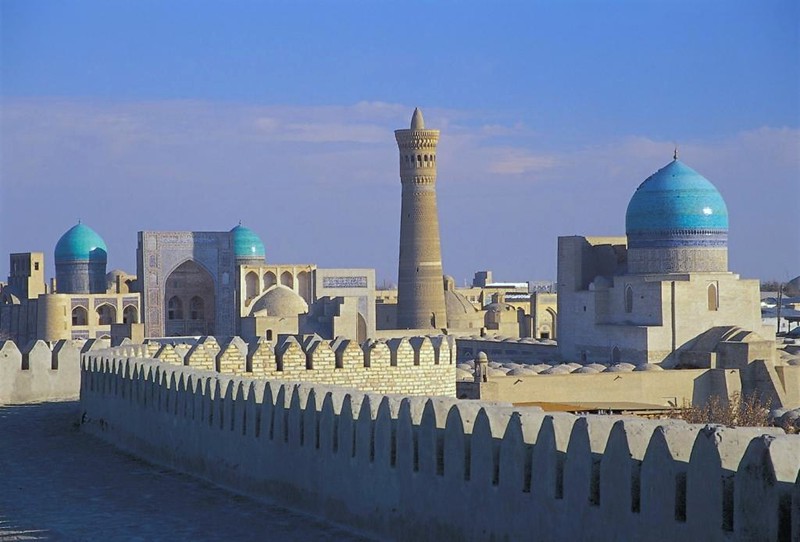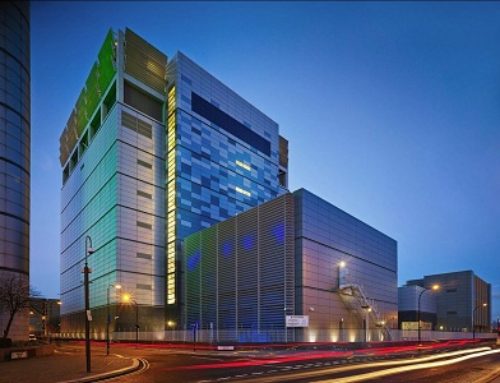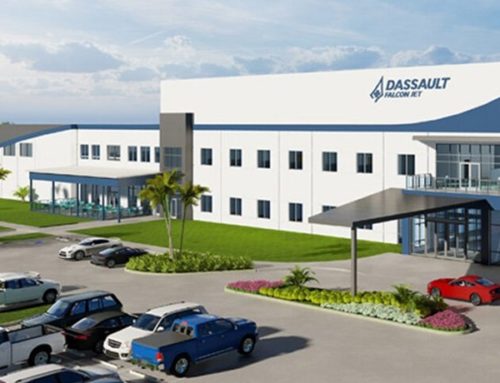1. Uzbekistan invests in Science
Uzbekistan, a nation with a rich history of scientific and cultural achievements, is once again emerging as a beacon of innovation and research. After years of economic and political transformation, the country is rediscovering its scientific edge, driven by a renewed focus on education, technology, and international collaboration. Recent initiatives, such as the National Science, Technology, and Innovation Policy (2022-2030), highlight Uzbekistan’s commitment to fostering a robust scientific community and integrating modern technologies into various sectors. This article explores the key developments and strategies that are propelling Uzbekistan towards a future of scientific excellence and global competitiveness.
Recent breakthroughs
Uzbekistan has been making significant strides in the field of science and technology. Here are some recent developments:
1. National Science, Technology and Innovation Policy (2022-2030):
This policy was presented by UNESCO, the Islamic Development Bank (IsDB), and the Government of Uzbekistan in a hybrid event held at Hilton Hotel Tashkent on 19 April 2022. The policy aims to strengthen the inclusive Science, Technology and Innovation (STI) system in Uzbekistan.
2. Mapping Research and Innovation in the Republic of Uzbekistan:
This report, available in English, Russian, and Uzbek, describes the STI landscape in Uzbekistan and suggests orientations for further strengthening the national STI system and fostering the STI development in the country.
3. STI Gap Analysis of Uzbekistan:
This analysis identifies the introduction of modern innovative ideas, developments, and technologies as key factors promoting quick and meaningful progress towards joining the ranks of developed countries in the world economy.
These initiatives highlight Uzbekistan’s commitment to fostering a robust scientific community and integrating modern technologies into various sectors. The country’s goal is to develop an innovation-driven economy, and these recent breakthroughs are testament to their progress in this direction. Please note that specific scientific breakthroughs or discoveries may not be publicly available or widely reported due to the nature of scientific research.
2. CIRRO Fulfillment new centre in Lichfield

Lichfield by catan2011 CC BY 2.0
In a significant move set to revolutionize the logistics industry, CIRRO Fulfillment has announced the opening of a new centre in the historic city of Lichfield. This strategic expansion is not just a testament to CIRRO’s growing footprint in the UK, but also a major step forward in enhancing its operations across Europe. The new centre is expected to streamline the company’s fulfillment processes, improve efficiency, and ultimately provide a superior service to their customers. This article delves into the details of this exciting development and explores its potential impact on the future of logistics and supply chain management.
About CIRRO Fulfilment
CIRRO Fulfillment is a leading global cross-border e-commerce infrastructure service provider offering unmatched logistics and fulfillment solutions for international e-commerce sellers. It focuses on omnichannel fulfillment services for various product categories such as fashion, furniture, electronics, and more.
CIRRO Fulfillment has a vast network of global fulfillment centers that reach an area of 1,400,000 m² across more than 30 countries, including four intelligent fulfillment centers in the UK, Germany, and the U.S. that use Autonomous Mobile Robots (AMRs).
Services
– 3PL Fulfillment: They manage everything from warehouse management to last-mile carrier management.
– E-Commerce Fulfillment: They help manage orders and inventory, receive and verify inventory, pick and pack orders, ship to consumers, and handle returns and exchanges.
– Subscription Box Fulfillment: They specialize in packing, shipping, and handling returns for subscription boxes.
– Value-Added Services: These include serial number and batch management, product security, and packaging management.
– Distribution: They collect and carefully pick and pack your products.
– Customized Solutions: They offer customized inventory management, order processing, warehousing, and transportation.
– FBA Prep Services: They prepare your products correctly and efficiently for shipment to Amazon’s fulfillment centers.
CIRRO Fulfillment is dedicated to offering comprehensive and fast-responsive fulfillment solutions. It has achieved a total of 1,400,000 square meters of global storage space, including two intelligent fulfillment centers in the US and the UK that use AMRs. Currently, there are more than 4,000 active clients using their fulfillment service in over 80 fulfillment centers.
Lichfield
The new CIRRO Fulfillment centre, named Ergo Fradley 354, is located in the well-established Fradley Park, Lichfield. Here are some key details about the new centre:
– The facility spans 33,000 square meters.
– It is a joint venture between NFU Mutual and Ergo Real Estate.
– The centre is built to the highest standards, achieving EPC A, BREEAM Excellent and Planet Mark Certification, which allows for sustainable, reliable, and efficient operations.
– The facility is equipped with 50-meter secure yards, controlled access, and advanced surveillance systems to store the products more safely.
– With a 15-meter height, 50 KN/m floor loading capacity, and 36 dock levelers, the facility offers spacious storage, accommodates heavy products, and ensures fast product circulation.
– The strategic location enables CIRRO Fulfillment to serve a densely populated region of over one million people within a 30-minute drive of Lichfield, Burton, and Birmingham.
– Situated on the A38, it offers excellent accessibility, quickly reaching the northern areas of Lichfield and the Midlands via the M6. Moreover, the M1 provides convenient access to the rest of the UK, including London in the south and Leeds in the north.
With the addition of this new centre, CIRRO Fulfillment now operates 15 centres across the UK, totaling over 200,000 square meters of fulfillment space. On a broader scale, the inclusion of the new fulfillment centre expands the company’s footprint across 14 European countries, bringing the total storage capacity to over 500,000 square meters. This extensive network supports companies in scaling their e-commerce operations efficiently.
Charles Lu, Head of Business Development at CIRRO Fulfillment Europe, expressed excitement about the launch of the new fulfillment centre in the UK, stating that this expansion enhances their warehousing capacities, alleviates regional storage capacity pressures, and better serves the growing demands of the e-commerce market.
3. Thailand & Bhutan FTA negotiations

Aaron Santelices via Unsplash
In a significant stride towards bolstering bilateral relations, Thailand and Bhutan have embarked on negotiations for a comprehensive Free Trade Agreement (FTA). This initiative, confirmed by Thailand’s Deputy Commerce Minister, Napintorn Srisunpang, and Bhutanese Prime Minister Tshering Tobgay, aims to eliminate trade barriers and improve market access, particularly for agricultural products.
The FTA discussions align both nations towards a shared goal of enhanced bilateral trade and investment, targeting a trade volume of US$120 million (approximately 4.38 billion baht) by 2025. This development is not just about numbers; it’s about strengthening the deep cultural bonds rooted in Buddhist heritage and monarchical traditions that promote robust economic cooperation in agriculture, tourism, investment, and handicrafts.
Moreover, the negotiations also encompass the ambitious Mindfulness City project, a proposed economic hub and tourist gateway near Gelephu on the Indian border. This project aims to establish a vital economic corridor connecting South Asia with Southeast Asia through India’s northeast, presenting lucrative opportunities for Thai businesses.
As we delve into the details of this promising FTA, we will explore how it could potentially reshape the economic landscape of these two nations and create a new era of prosperity.
Provisions
The Free Trade Agreement (FTA) between Thailand and Bhutan is a comprehensive plan with several key provisions:
1. Trade Target:
The FTA negotiations aim to reach a trade value of USD 120 million by 2025.
2. Agricultural Cooperation:
Both parties have agreed to promote Bhutan’s organic agricultural products in the Thai market and to exchange technological knowledge on agricultural processing. Bhutan has expressed interest in exporting its agricultural products, such as apples, potatoes, oranges, and honey to Thailand.
3. Investment Opportunities:
Thailand has expressed interest in investing in infrastructure, retail, healthcare, and agricultural technology. The Bhutanese Prime Minister proposed the Gelephu Mindfulness City (GMC) project, a royal initiative, highlighting its potential.
4. Tourism:
They also discussed Buddhist tourism, medical and health tourism, and community-based tourism.
5. Education and Healthcare:
In the field of education, the two countries discussed student exchange programs, scholarships, and training related to public services. In healthcare, they agreed to continue cooperation on kidney transplant surgeries and other medical services.
6. Environmental Sustainability:
The Thai Prime Minister emphasized Thailand’s carbon neutrality goal by 2050 and net-zero carbon emissions by 2065, with Bhutan offering to share its expertise in green energy.
These provisions aim to boost competitiveness by eliminating tariffs and non-tariff barriers on key exports such as dry fruits, garments, rubber and plastic products, and electronic appliances. The FTA is expected to be completed by November 2025.
Impact
The Free Trade Agreement (FTA) between Thailand and Bhutan is expected to have several impacts on local industries and consumers:
1. Enhanced Competitiveness:
The FTA will eliminate tariffs and non-tariff barriers, enhancing the competitiveness of export products such as dry fruits, garments, rubber and plastic products, and electronic appliances. This could lead to more competitive prices for consumers and potentially higher profits for local industries.
2. Increased Market Access:
The agreement will provide better market access, particularly for agricultural products. Bhutan has expressed interest in exporting its agricultural products, such as apples, potatoes, oranges, and honey to Thailand. This could benefit Bhutanese farmers and agribusinesses by opening up a new market for their products.
3. Investment Opportunities:
Thailand has expressed interest in investing in infrastructure, retail, healthcare, and agricultural technology. This could lead to job creation and economic growth in these sectors.
4. Tourism Boost:
The two countries also discussed Buddhist tourism, medical and health tourism, and community-based tourism. This could attract more tourists to both countries, benefiting the local tourism industry.
5. Environmental Sustainability:
The Thai Prime Minister emphasized Thailand’s carbon neutrality goal by 2050 and net-zero carbon emissions by 2065, with Bhutan offering to share its expertise in green energy. This could lead to more sustainable practices in local industries.
6. Education and Healthcare:
In the field of education, the two countries discussed student exchange programs, scholarships, and training related to public services. In healthcare, they agreed to continue cooperation on kidney transplant surgeries and other medical services. This could improve the quality of education and healthcare services in both countries.
In conclusion, the FTA is expected to bring significant benefits to both countries, but it’s also important to consider potential challenges. For instance, local industries may face increased competition from imported goods, and adjustments may be needed to ensure that the benefits of the FTA are distributed equitably.
Featured image Landscape – Bukhara, Uzbekistan by By Vladimir Jirnov CC BY-NC-SA 2.0







